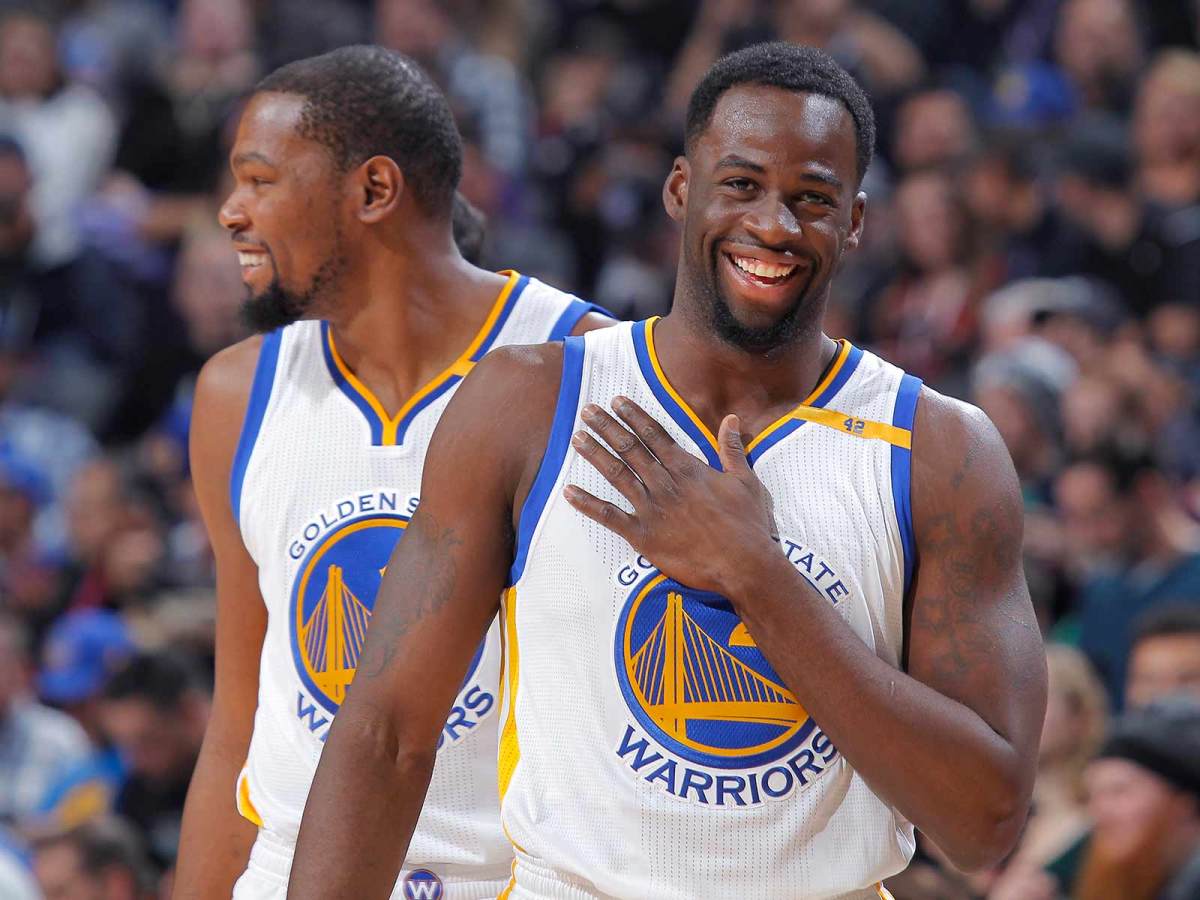Challenging the Warriors Might Be Financially Impossible

The Golden State Warriors are as much an anomaly on the books as they are on the court. The NBA’s salary cap spike in 2016 made it all possible; what had been a championship team became, by way of new league revenue, a championship team with room to add a max contract. Kevin Durant turned that potential into something devastating. If it wasn’t bad that Golden State already outclassed the league in terms of collective talent, at that point it separated itself fully by way of its finances.
For that, the Warriors’ front office deserves credit. There is a certain amount of serendipity involved in the cap spike arriving just at the right time. Had the spike come a year earlier, Durant wouldn’t have been a free agent and the optics of any top free agent joining a team only weeks after it had won the title might have been more challenging. Any later and the Warriors would have had to grapple with the free agency of Stephen Curry and Andre Iguodala just as they were set to open up cap room. The stars wound up aligning perfectly, but only because Golden State made sure to get out of their way once it realized their trajectory. Years of subtle planning had made the Warriors players in the market with only manageable sacrifice.
How Will the Thunder Deploy Russell Westbrook and Paul George?
Challenging the Warriors, then, not only requires that opponents execute perfectly but that they build perfectly. Signing a single player to a bloated contract could put Golden State out of reach. If a star moves out of his prime slightly earlier than expected, any hope of catching the Warriors could dry up completely. When the benchmark is a roster with two MVPs, two All-NBA players, and a flexible supporting cast, even a small miscalculation can become incredibly meaningful.
The room for error is nonexistent. Golden State has succeeded in playing wide swaths of the league off the court entirely. Those who can’t keep focus while defending off the ball are laid out on a hundred screens. Any player who can’t shoot or doesn’t pose an immediate threat is deprioritized for the sake of crowding the lane or softly doubling an opposing star. Those who cannot make quick decisions are lost. Teams must be so well spaced to stress test the Warriors’ defense, and yet attacking the boards seems the only plausible way to keep them on the ropes—again paring down the list of eligible difference-makers. An incredibly limited number of players are even viable against the Warriors in a playoff setting. Twenty-nine teams—or as many of them haven’t yet deferred to Golden State’s current competitive window—now compete for their services while juggling their own finances.

Timing is everything, and teams that don’t already have one or two perfectly suited stars under contract might already be too late. Even those that do will run up against a ticking clock; most contracts trend upward, year over year, and are short enough that some star or another on the best teams always seems due for a raise. Consider the Rockets. If everything goes wonderfully this season, Houston might find itself in a position where its best course is to re-sign a 33-year-old Chris Paul to a five-year max contract… while also recommitting to free agents Clint Capela and Trevor Ariza for the sake of keeping its core intact. The window for meaningful growth will be effectively over, timed out into one of the most expensive payrolls in the league.
Durant’s surprising salary concessions this summer—which removed any excuse for the Warriors to cheap out on re-signing players like Iguodala and Shaun Livingston—have faced teams with an impossible dilemma. Most have not drafted so well that they can develop stars ahead of their prime and re-sign them through the timing and mechanisms that benefit incumbent teams. None have a player as good as Curry on a deal as accommodating as his previous one, which topped out with a $12.1 million salary. So few have any defender who could plausibly slow Durant, much less the depth in coverage to also contain Curry and Klay Thompson simultaneously. Even getting within range of the Warriors requires four or five complete players, a type in such short supply that they almost never cluster like this. The money—and the opportunities—are too good elsewhere.
In some ways, the most dangerous weapon in Golden State’s arsenal is the demand of the open market. From that comes uncertainty. Even very good teams wind up hedging based on the reasonable fear that their plans might not go exactly as expected. How could the Spurs, for example, strip down their 61-win roster around Kawhi Leonard with no stars guaranteed to reframe it? And how could San Antonio even build the depth it needs when clearing the deck would remove much of its ability to maneuver over the salary cap line? Hypothetically filling a blank canvas with cherry-picked players makes for some ridiculous game theory, as if there weren’t countless factors involved to complicate the process. Shift those scenarios into a world where every team is drawing from the same, limited talent pool and they bump against a cold reality: The math to beat the Warriors almost never adds up.
